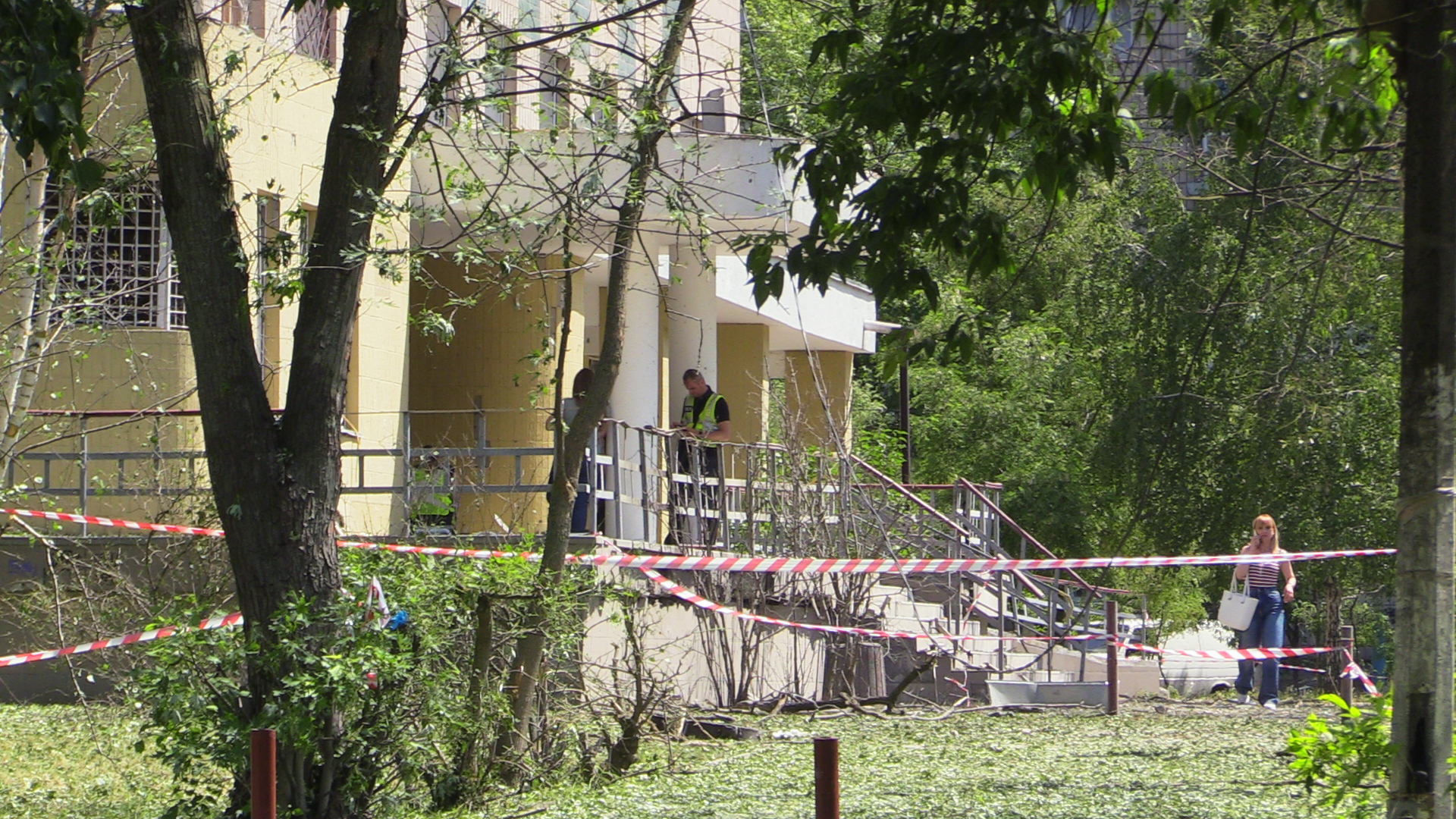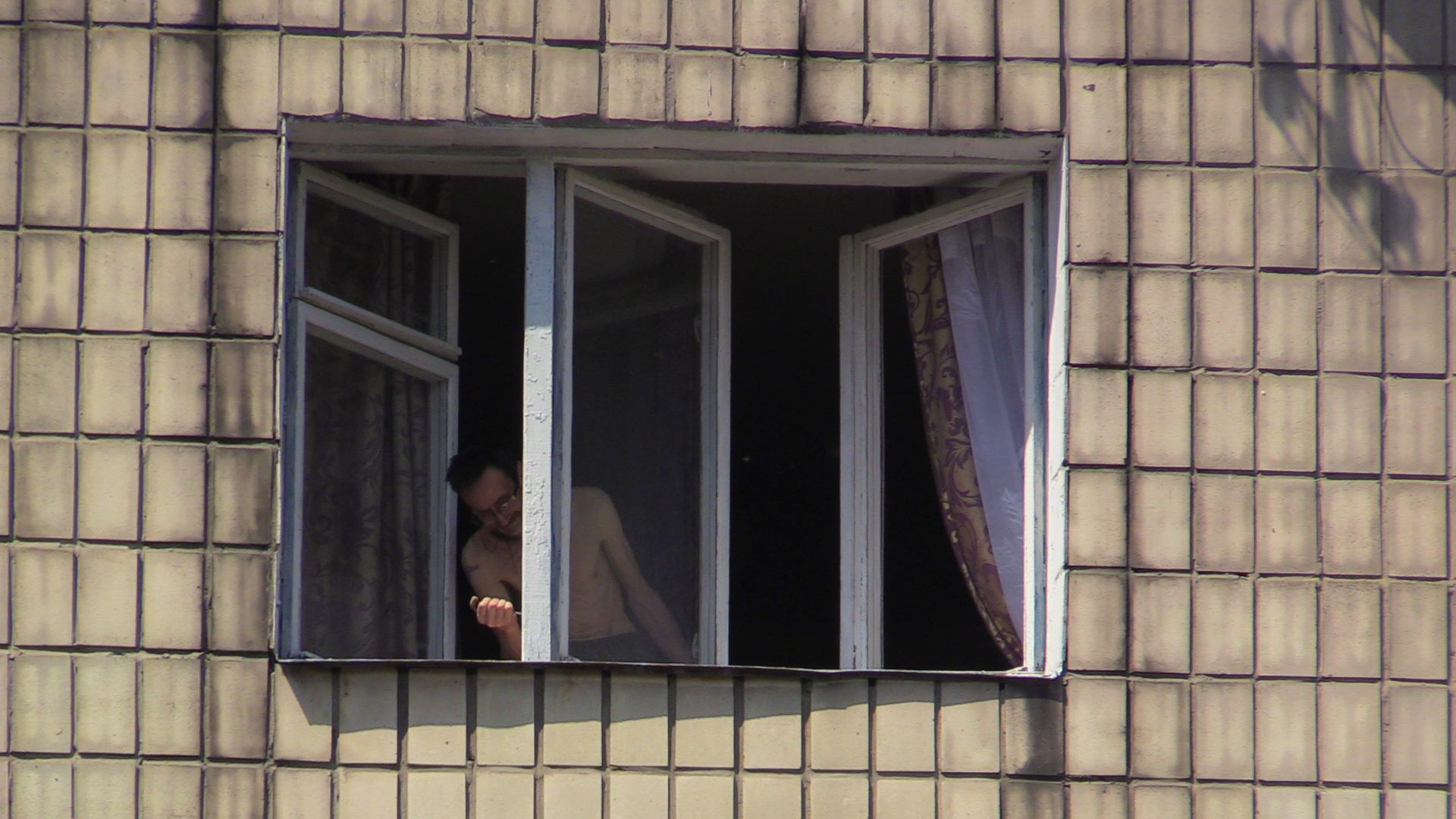
Kyiv, Ukraine – The shock wave kicked Leonid Kobizhinsky off his bed.
The 65-year-old woke up on the floor of his apartment in eastern Kyiv before dawn on Thursday seconds after a hypersonic Russian cruise missile was shot down above the nine-storey building.
Minutes earlier, air raid sirens started wailing, but they have never been audible in his apartment, he said.
He did not even try to run to a bomb shelter in the basement of a children’s hospital less than 40 metres (131 feet) away from his building because the shelter’s doors were closed shut.
“They closed it a long time ago,” Kobizhinsky told Al Jazeera.
Three of his neighbours did not know that and were killed by the missile’s debris as they were trying to get in.
Two were women aged 30 and 34, and the third was a nine-year-old girl, according to city officials. A dozen more people were wounded, they said.

Kyiv Mayor Vitali Klitschko “recommended” sacking the head of the Desniansky district, where the tragedy occurred, along with a hospital official in charge of the shelter.
City officials convened for an emergency meeting to discuss the safety of bomb shelters in the city whose prewar population stood at 3.6 million.
But the problem is nationwide as millions of Ukrainians face a daily or nightly dilemma when Russian shelling begins.
They can stay at home in their beds or hide “between two walls, away from windows”, following the instructions repeated hundreds of times on television and in warnings. But it is too scary, especially if one lives in a high-rise.
“It’s like a cinema. There are rockets flying, exploding and fire raging,” Oleh Dobyzhko, a clerk in an electronics shop, told Al Jazeera.
He lives on the 10th storey of a new apartment building in central Kyiv and prefers to sit the shelling out in his car.
Dobyzhko does not even think about the safety of thousands of bomb shelters in Kyiv that have to stay open night and day.

Some are Soviet-era bunkers built decades ago in anticipation of a war with the West and equipped with water tanks and ventilation.
“You can order pizza here, there’s McDonald’s delivery,” safety expert Oleksandr Pilkevich told Al Jazeera in February 2022, just days before the war began.
He was standing inside a bunker underneath a library in northern Kyiv, behind huge steel doors, next to an air filtration system and freshly-painted water tanks.
Some shelters are underground train stations in urban centres with similar water and air supply systems.
And thousands more are temporary structures hastily equipped in the basement of apartment and administrative buildings, shopping malls and schools, or spacious underground parking in post-Soviet high-rises.
But the problem is that too many of them are closed despite countless official warnings and complaints from average Ukrainians and monitors.

The Center of Civil Liberties, a Nobel Peace Prize-winning human rights group, decided to monitor bomb shelters in Kyiv. Its volunteers simply could not find 27 percent of them.
“They are either actually missing, or there are no signs that would direct passers-by to a place where you can hide from danger,” the group’s Iwanna Malchewska said at a news conference in April.
The existing shelters are far from comfortable. Only one in five has a functioning toilet, only 38 percent have electricity and less than one in three has running water, the Center of Civil Liberties said.
Sometimes, a shelter is privately owned, and the owners are either out of reach or simply do not want to open the doors for neighbours.
“We are currently unable to bring to justice such owners” because no laws have been amended, city official Roman Tkachuk said at a news conference.

In February 2022, Al Jazeera’s reporter spent several nights in a bomb shelter turned recording studio – only after the neighbours broke the doors open after failing to get in touch with the owner.
Dozens of people with children and pets scurried down its stairs after each air raid siren and bunked there for hours, next to pricey synthesisers and recording equipment.
These days, the studio’s doors are closed shut again – even though Russian cruise missiles and drones barraged Kyiv 17 times in May alone.
More than 15 months after the war began, these missiles and drones reached Kyiv-controlled regions of Ukraine. But their residents cannot count on the shelters.
“There’s simply nowhere to go,” Denys Skrypchenko, one of the residents of the nine-storey building where the three were killed, told Al Jazeera.
The nearest open shelter was in a public school, but it only accepted students and staffers, he said.
Skrypchenko said that the shelters in his neighbourhood functioned only after the war began, and most closed down following the withdrawal of Russian troops from around Kyiv in late March 2022.

About 2km (1.2 miles) away from his building, another man claims that the nearest shelter is nothing but an empty and dark basement.
“One has to run there with their own chairs,” Evhen Boyko told Al Jazeera.
And many Ukrainians have come to a simple conclusion.
“The most important thing is to stay in your apartment,” Iryna Menkovskaya, who lived in the eastern city of Dnipro, told Al Jazeera. “You have to sit, not run.”
She relocated to be with her daughter in Kyiv after a Russian rocket killed 46 people and wounded 80 in an apartment building close to her house in January.
And her 11-year-old grandson, Maksym Semoynov, cannot get used to the sound and sight of shelling.
“I feel weak, nervous, want to cling to my mom,” he told Al Jazeera, clutching a cone of chocolate ice cream.



!["[T]he First and Fifth Amendments Require ICE to Provide Information About the Whereabouts of a Detained Person"](https://images.inkl.com/s3/publisher/cover/212/reason-cover.png?w=600)



